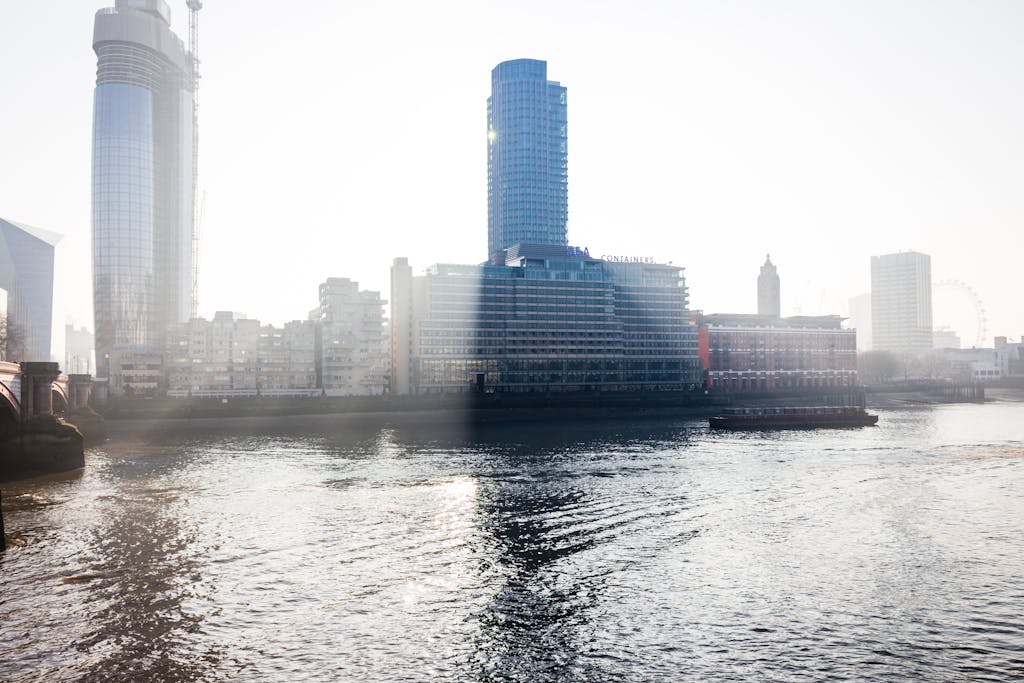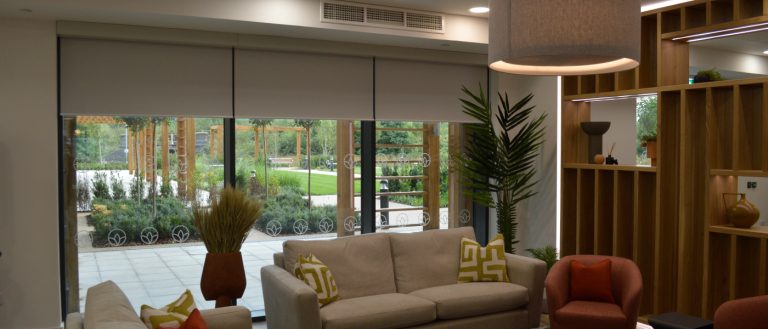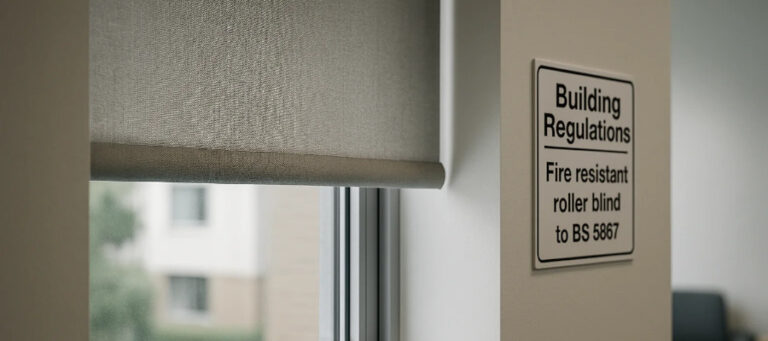Smart Blinds and Curtains with Seamless BMS Control
Smart shading is no longer a luxury—it’s a necessity for modern buildings striving for energy efficiency and sustainability.
Motorised blinds and curtains aren’t just about convenience; they actively contribute to reducing energy consumption, improving indoor comfort and supporting the UK’s net-zero commitments.
Automated shading systems help regulate indoor temperatures by reducing solar gain in summer and retaining heat in winter.
This minimises reliance on HVAC systems, cutting energy costs and lowering carbon footprints.
In commercial and residential architecture, integrating intelligent shading with other building systems has become a key design consideration—particularly with the growing emphasis on sustainable construction.
For UK architects and specifiers, ensuring compliance with Part L of the Building Regulations (covering energy performance) and Part O (mitigating overheating) is a priority.
Smart shading solutions provide a direct path to meeting these standards while enhancing occupant comfort.
At Enviroscreen, we specialise in integrating motorised blinds and curtains with Building Management Systems (BMS), ensuring seamless control and maximum efficiency.
Whether you need shading solutions for a commercial high-rise, healthcare facility, or educational institution, our expertise ensures full compliance with UK regulations while delivering smart, automated shading that works effortlessly.
Why Building Management System (BMS) Integration Matters
A truly intelligent shading system doesn’t work in isolation.
Integrating blinds and curtains with a Building Management System (BMS) transforms them from simple shading devices into active components of a building’s automation strategy.
In the UK, BMS platforms such as Trend, Cylon and Priva allow facilities managers to centralise control over lighting, HVAC and shading, optimising energy efficiency across an entire building.
This ensures blinds adjust automatically based on occupancy, daylight levels and temperature, improving energy performance without manual intervention.
IoT protocols like Zigbee, Z-Wave, KNX and BACnet/IP enable smart shading to communicate seamlessly with other building systems.
Whether adjusting blinds in response to external temperature fluctuations or synchronising with artificial lighting via DALI integration, a well-connected shading system creates a more responsive and efficient indoor environment.
The benefits extend beyond energy savings.
Predictive shading—which uses real-time weather data from sources like the Met Office—allows blinds to adjust proactively, blocking heat before it enters a building or opening to maximise natural daylight during overcast conditions.
With Enviroscreen’s expertise, integrating motorised blinds and curtains into your BMS is straightforward.
We work closely with architects, specifiers and facilities managers to ensure full compatibility with existing automation systems, making smart shading a practical and valuable addition to any project.
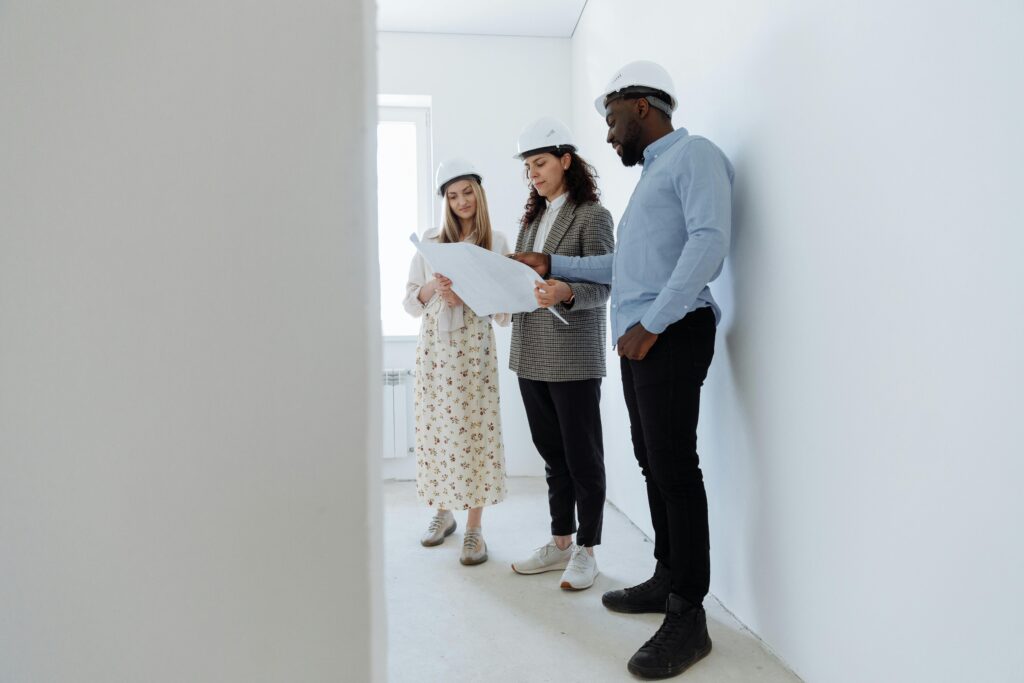
Key Features of Smart Shading Devices
Smart shading goes beyond blocking light—it actively improves energy efficiency, comfort and automation in modern buildings.
By responding to real-time conditions, motorised blinds and curtains help reduce energy consumption, optimise daylight use and enhance building performance.
These systems are also designed for seamless integration with smart controls, making them a valuable addition to both new builds and retrofit projects.
Automation & Intelligent Control
Motorised shading systems adjust automatically to changing conditions, removing the need for manual operation.
This ensures a consistent indoor environment while reducing energy wastage.
Key automation features include:
- Sunlight-responsive adjustments – Blinds react to natural light levels, preventing glare and overheating.
- Occupancy-based control – Sensors detect movement, adjusting shading only when spaces are in use.
- Integration with UK weather data – Smart shading syncs with Met Office APIs to adjust in response to real-time weather forecasts.
These features make buildings more efficient by reducing reliance on artificial lighting and HVAC systems.
Energy Efficiency & Sustainability
A well-designed shading system helps reduce solar gain in summer and retain heat in winter, cutting the demand for heating and cooling.
In the UK, compliance with Part L of the Building Regulations is essential for energy efficiency and smart shading supports these standards by reducing overall energy consumption.
The result is lower operational costs, improved sustainability and a more comfortable indoor climate.
Aesthetic & Functional Flexibility
Shading solutions should complement a building’s design while offering practical benefits.
A wide range of fabric choices allows designers to match shading to interior aesthetics, with options that also provide acoustic control and antimicrobial properties.
Fire safety is also a key consideration, especially in commercial and public spaces.
Smart shading materials comply with BS 5867, ensuring they meet UK fire safety regulations.
For spaces with limited room for traditional systems, compact motorised solutions offer discreet, space-saving alternatives.
Seamless BMS & Smart Home Integration
Smart shading works best when integrated into a Building Management System (BMS) or smart home platform, allowing for centralised control and automation.
Key integration features:
- BMS compatibility – Systems connect with KNX UK & BACnet/IP, making them suitable for large-scale commercial projects.
- Lighting synchronisation – DALI-controlled lighting can be linked with shading to optimise daylight use and reduce energy waste.
- Wireless retrofit options – Some solutions allow shading automation without major electrical work, making them ideal for upgrades.
With these integration capabilities, smart shading becomes part of a fully automated system, improving efficiency, reducing costs and enhancing user convenience.
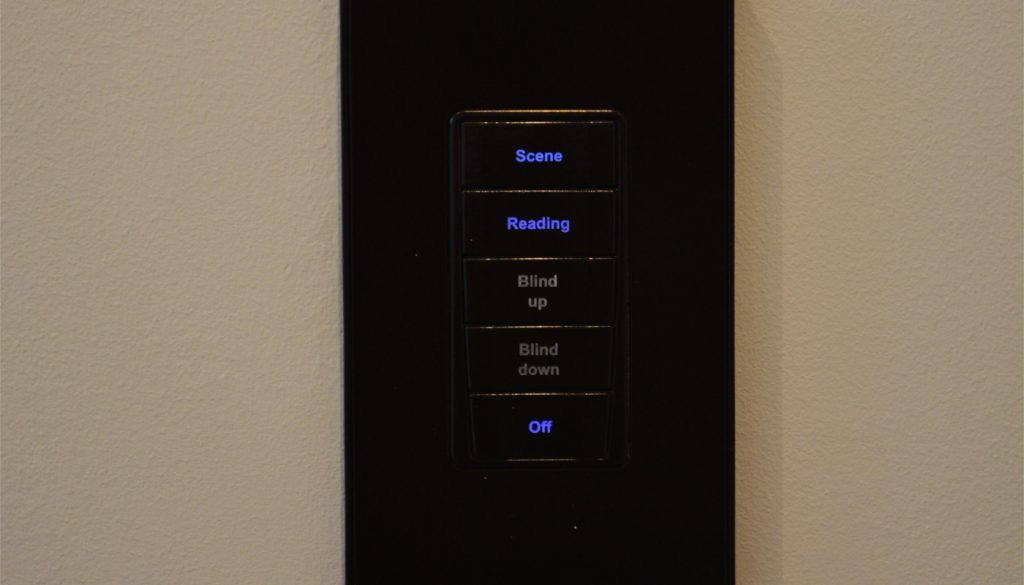
Key Benefits for Industry Professionals
Smart shading solutions offer more than just convenience—they provide measurable benefits for architects, interior designers, specifiers and building managers.
From improving energy efficiency to meeting sustainability targets, automated blinds and curtains play a vital role in modern construction and refurbishment projects.
Supporting Sustainability & Compliance
Energy efficiency and environmental responsibility are at the core of modern building design.
Smart shading helps meet stringent UK sustainability standards by reducing energy consumption and optimising natural light use.
- London Plan 2021 Compliance – Smart shading supports energy-efficient design, helping buildings align with the Be Seen, Be Lean, Be Green approach outlined in the London Plan.
- BREEAM Certification – Optimised shading improves a building’s energy rating by minimising overheating and reducing the reliance on artificial cooling.
- Heritage Building Adaptation – Many listed buildings cannot use external solar shading, but discreet internal motorised blinds provide an effective alternative without compromising architectural integrity.
By integrating these solutions, industry professionals can ensure their projects meet sustainability targets while maintaining visual appeal.
Balancing Function & Style
Modern buildings need shading that works without detracting from the design.
Fire safety, glare control and aesthetic flexibility are just as important as energy performance.
- Fire-rated fabrics – Materials comply with BS 5867 fire safety standards, ensuring suitability for commercial, residential and healthcare environments.
- Glare control for workplaces – According to the BCO Guide 2023, reducing glare in open-plan offices improves productivity and well-being. Smart shading automatically adjusts to prevent excessive brightness while maintaining daylight exposure.
- Bespoke design options – Shading can be fully customised to match interior schemes, with a variety of fabric choices, motorised headrails and hidden systems.
Balancing form and function ensures shading enhances both user experience and overall design.
Meeting UK Regulations & Net Zero Goals
As the UK moves towards net-zero emissions, compliance with evolving regulations is essential for new developments and refurbishments.
Smart shading directly supports these goals by improving energy efficiency and reducing unnecessary energy consumption.
- Part O (2022) Compliance – Introduced to combat overheating in new residential buildings, Part O recommends passive shading strategies, making smart blinds a practical solution for managing solar gain.
- Net Zero Strategy (2035) – Automated shading minimises heating and cooling loads, reducing emissions from energy-intensive HVAC systems.
- Durability & Cost Savings – High-quality motorised systems require minimal maintenance, reducing lifecycle costs compared to manual blinds.
By integrating shading with other energy-efficient strategies, industry professionals can future-proof buildings while ensuring compliance with UK energy policies.
Overcoming Challenges & Common Concerns
While smart shading offers clear benefits, industry professionals often have concerns about costs, installation complexity and long-term maintenance.
Addressing these challenges early makes integration easier and ensures a strong return on investment.
Addressing High Upfront Costs
The initial investment in motorised shading can seem high, but financial incentives and long-term savings offset the costs.
The Enhanced Capital Allowance (ECA) scheme allows businesses to claim tax relief on energy-efficient equipment, including smart shading systems.
By reducing reliance on HVAC systems, automated blinds lower energy consumption, cutting operational costs over time.
Studies show that smart shading can reduce heating and cooling demands by up to 25%, leading to significant savings on utility bills.
For projects with budget constraints, modular shading systems allow phased implementation.
Businesses can start with high-impact areas, such as south-facing façades, and expand gradually as budgets allow.
Simplifying Installation & Integration
Retrofitting smart shading into existing buildings can be challenging, particularly in listed properties or high-traffic commercial spaces where disruptions must be minimised.
Wireless shading solutions provide automation without the need for extensive rewiring, making them ideal for retrofit applications.
These systems integrate with existing Building Management Systems (BMS) and smart home platforms, ensuring seamless operation.
A notable example is The Shard in London, where motorised blinds were integrated into the building’s BMS without disrupting operations.
The system dynamically adjusts shading based on real-time weather conditions, reducing glare while maintaining energy efficiency.
Durability & Maintenance Considerations
High-performance shading systems are designed to last, but like any automated technology, they require maintenance.
Choosing the right components helps reduce long-term upkeep.
Motorised blinds use IP-rated motors, which are built to withstand the UK’s humid climate and prevent moisture-related damage.
Many systems come with long-term warranties and service agreements, offering additional peace of mind.
To further simplify maintenance, modern smart shading solutions include remote diagnostics and predictive monitoring.
These systems detect faults before they become critical, allowing for proactive servicing that minimises downtime and repair costs.
By selecting durable, low-maintenance shading solutions, industry professionals can ensure reliability while keeping operational costs low.
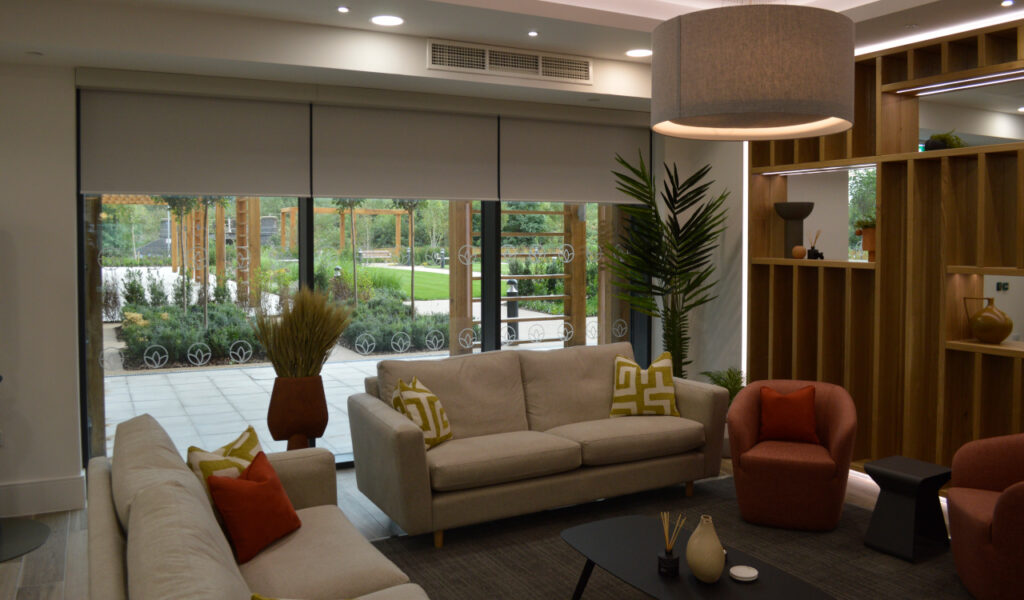
Technical Aspects & System Performance
Smart shading isn’t just about aesthetics or energy efficiency—it’s a highly technical solution that integrates with building automation, cybersecurity protocols and energy management systems.
Understanding its technical performance helps specifiers, architects and facility managers make informed decisions.
Smart Automation Capabilities
A well-designed shading system responds dynamically to environmental conditions and user preferences, improving both comfort and efficiency.
Key automation features include:
- Weather-responsive adjustments – Smart blinds can integrate with UK-specific APIs, such as the Met Office, to anticipate weather changes and adapt shading accordingly. This helps regulate indoor temperatures before conditions become uncomfortable.
- Occupancy sensors & adaptive shading – In line with BS EN 15232 (the European standard for building automation efficiency), modern shading systems adjust based on occupancy data. This means blinds remain open in unoccupied rooms for natural heating or close to prevent heat loss when a space is vacant.
- Remote access & scheduling – Through mobile apps and smart home platforms, users can pre-set schedules or manually override shading settings from anywhere, ensuring full control over daylight management.
These automation features create a self-regulating system, reducing energy consumption while enhancing user convenience.
Energy Performance & ROI
For industry professionals, the question isn’t just whether smart shading improves energy efficiency—but how much it saves and how quickly it pays for itself.
When calculating return on investment (ROI), key factors include:
✔ Initial system cost – Includes motorisation, integration with BMS and installation.
✔ Energy savings – Lower cooling and heating expenses provide cumulative savings over time.
✔ Maintenance costs – Automated shading requires less manual operation and repair than manual blinds.
In most cases, smart shading pays for itself within 5–10 years, with additional savings accumulating over the system’s lifespan.
Cybersecurity & Data Protection
With IoT-connected shading, cybersecurity is a growing concern.
Smart shading systems communicate with BMS networks, mobile apps and cloud-based controls, making them potential targets for cyber threats.
To prevent security breaches, modern systems use:
- Secure IoT protocols – Compliance with UK NCSC (National Cyber Security Centre) Guidelines ensures that connected shading devices use encrypted communication channels to prevent unauthorised access.
- Protection against hacking threats – Systems are designed to resist common cyber-attacks, including man-in-the-middle attacks and unauthorised device takeovers.
- Best practices for data protection – Secure user authentication, role-based access control and data encryption ensure that only authorised personnel can modify system settings.
By prioritising cybersecurity, smart shading solutions remain secure, reliable and resistant to potential cyber risks.
Research Insights: The Role of Automated Shading in Energy Efficiency
Research from the European Solar Shading Organisation (ES-SO) highlights the significant impact that automated solar shading can have on energy savings, CO₂ reduction and overall building performance.
According to ES-SO, highly glazed buildings—especially in commercial settings—cannot function efficiently without intelligent shading control.
Smart Shading as a Key Element of Sustainable Building Design
The International Energy Agency (IEA) classifies dynamic solar control as a high-priority feature for modern buildings, stating that automated shading should be a global standard for new developments.
Energy Savings & CO₂ Reduction:
- Smart shading systems can enable energy savings of up to 60% for lighting, 20% for cooling, and 26% for peak electricity demand.
- Dynamic shading solutions are estimated to reduce heating and cooling energy use by 22%, equating to 59 Mtoe (million tonnes of oil equivalent) per year across the EU.
- These measures contribute to an annual carbon emissions reduction of 137.5 MtCO₂, making shading a critical solution for net-zero building strategies.
Preventing Overheating in Airtight, Low-Energy Homes:
- Highly insulated and airtight low-carbon buildings often experience overheating due to large glazing areas.
- Smart shading is one of the most effective solutions to regulate indoor temperatures without increasing mechanical cooling loads.
Integration with Other Building Technologies:
- Automated shading is most effective when combined with dynamic lighting controls, ventilation heat recovery and night cooling strategies.
- Seamless integration with Building Management Systems (BMS) ensures blinds respond to real-time weather conditions, occupancy levels and daylight availability, optimising performance across multiple building technologies.
Key findings from ES-SO’s study show:
✔ 30% savings in cooling energy when dynamic shading is applied to South/South-West facing windows.
✔ 14% savings in heating energy through improved insulation from shading systems.
✔ Significant efficiency gains when shading is combined with older glazing, making it a cost-effective alternative to full window replacements.
With the push for low-energy buildings, net-zero commitments, and the rising risk of overheating, integrating automated shading is no longer just an option—it’s a requirement for sustainable, cost-effective design.
Case Study: Manhattan Loft Gardens, London
The Manhattan Loft Gardens project in London is a prime example of how smart shading can enhance both performance and aesthetics in high-rise residential buildings.
Project Challenges:
- The building’s glass-heavy façade made solar gain control essential, but space constraints limited the installation of traditional shading systems.
- Integration with DALI lighting required a bidirectional communication system to synchronise blinds with artificial lighting.
- Bespoke software development was needed to centralise shading automation within the building’s smart control system.
Customised Solutions:
- Vestamatic SMI 240V motors were selected for their silent operation and seamless integration with the building’s automation system.
- A bespoke control platform was developed to allow synchronisation between shading and lighting, ensuring optimal daylight use.
- A centralised BMS integration enabled automated adjustments based on real-time weather conditions and occupancy patterns.
This case study demonstrates how custom-engineered smart shading solutions can be tailored to overcome project-specific challenges while delivering tangible benefits.
TL;DR: The Key Takeaways
- Smart shading reduces energy costs by minimising solar gain, improving insulation and integrating with BMS platforms.
- Automation enhances comfort and efficiency, using real-time weather data and occupancy sensors to optimise shading adjustments.
- Compliance with UK regulations is seamless, with motorised blinds aligning with Part L & Part O of the Building Regulations.
- Industry studies show tangible benefits—smart shading reduces cooling demand by up to 22% and enhances workplace productivity.
- Security and integration matter—modern systems use secure IoT protocols and are compatible with KNX, BACnet/IP and DALI lighting.
Recommendations for Architects & Specifiers
If you’re planning a new build or refurbishment, integrating smart shading early ensures smooth BMS compatibility and maximises energy efficiency.
Here’s how to get started:
- Identify Key Requirements – Consider whether your project prioritises solar control, energy savings, glare reduction, or automation.
- Select the Right System – Choose motorisation, BMS compatibility and fire-rated fabrics based on project-specific needs.
- Ensure Compliance – Smart shading should align with BREEAM, London Plan and Building Regulations (Part L & Part O).
- Plan for Futureproofing – Opt for wireless or modular shading systems to allow for easy upgrades and expansions.
How Enviroscreen Can Help
Enviroscreen specialises in designing, supplying and integrating motorised blinds, curtains and solar shading systems for commercial, healthcare and high-end residential projects.
We work with architects, designers and facility managers to:
✔ Seamlessly integrate shading with BMS platforms.
✔ Provide tailored shading solutions that meet both aesthetic and functional needs.
✔ Ensure full compliance with UK building regulations and fire safety standards.
✔ Offer expert installation and long-term support to maximise performance and longevity.
If you’re looking to optimise energy efficiency, improve comfort and future-proof your building, Enviroscreen is ready to assist.
FAQ: Smart Shading Solutions
How does smart shading improve energy efficiency?
It minimises solar gain in summer, retains heat in winter and reduces reliance on HVAC systems, leading to 15–22% energy savings.
Can automated blinds be integrated with my existing BMS?
Yes. Our systems are compatible with BMS protocols.
Are motorised blinds suitable for heritage buildings?
Absolutely. Discreet internal motorised blinds provide solar control without affecting a building’s exterior.
What’s the ROI on smart shading?
Most systems pay for themselves in 5–10 years, thanks to energy savings and reduced maintenance costs.
Are there wireless solutions for retrofitting?
Yes. There are wireless automation solutions which are ideal for upgrades without major structural work.
For enquiries about smart blinds & BMS:
Enviroscreen Systems
Swift House,
13 Ronsons Way,
St Albans,
AL4 9QT
United Kingdom
Telephone: 01727 220 007
E-mail: info@enviroscreen.org.uk




